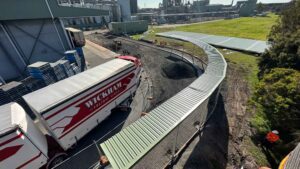How does the Development Application and Construction Certificate process work?
Each project is different. The basic process is DA, then CC. The process is basically overseen by the builder or building designer who may be an architect or a project manager.
Whoever is looking after it relies on the skills of the various professionals to pull together the comprehensive paperwork and plans required. This is then submitted to the council and the fees are paid. This is called “Lodgement”. The council then usually has 40 days to get this application process through. However due to the complexity and variation of each job, this timeline is often stretched with questions back-and-forth to clarify details.
A site visit and/or meeting with the council is highly recommended as this clarifies a lot of questions and issues early on. Once all these issues are addressed, the council can issue a DA and CC and work can legally commence.
If you think your project should be exempt from a Development Application that can be assessed by an expert in that field. They will assess it against the appropriate plan or statutory documents to give you the confidence that it is exempt and you ensure that you won’t be breaking any rules.
In this case you would be proceeding with what is known as a “complying development”.
The process can be through a private certifier, who will be very careful because their license is involved. However, being in private enterprise they should be able to expedite projects faster than local government departments. So that’s often the recommended path.
Having said that, the process can also be carried out through a local council. The DA/CC process is done at least with the DA to the council and the CC via a private certifier. Whichever why you choose to go, you will need to get some drawings done by the building designer or an architect.
Asset Building can help you with this process by bringing all relevant consultants in to do plans and documentation. This covers off on all that council is likely to require. It is wise to have a pre-DA meeting with a town planner, potentially your building designer and your builder and the council all together.
This will pre-empt any questions that might come later and potentially delay the project. The application can be modified and shaped in such a way that it will facilitate an approval fast as possible. Once the DA is through then the process moves on to signing of contracts so that engineering can be released. The rest of the project and documentation preparation can then be handled with expediency by your contractor and CC obtained.
What costs are involved in the DA and CC process?
Most councils charge a basic processing fees which covers their administration time. They also charge fees which are kept in a council fund for broader community improvement. There are also many other fees & charges from various utilities, and there are bonds to cover any damage that might happen to council assets. There is a long service levy (LSL) which is a fund setup to pay construction worker’s their long service leave as most of these workers move around from short-term projects and don’t get to a ten-year period at one place of employment, so this is a good fair system to pay them their long service.
Some of the fees are charged on a percentage of the project, but very broadly, council fees vary from around $1,000 to $2,000 up to hundreds of thousands of dollars for very large projects. It is very difficult to put a fixed price, as it’s not just “pro-rata”. In the complex arena of building that we work in, it is impossible in this context to give exact values, but it is a considerable amount which is often overlooked in the early budgeting stage of building.
Exempt developments might simply be a matter of a couple of thousand dollars to do a set of drawings. Plus say $2,000 to $5,000 for some drawings. Assessing for exempt status could be a similar amount so you’d be looking at say close to $10,000.
If it’s a complying development, there will need to be greater levels of documentation. It could go up to hundreds of thousands as there is fees that are a proportion of the project value. Such as Section 94 fees which for instance on a $5 million project might be $50,000.
Then if it goes all full DA/CC with potential complications, anywhere from $30,000 to hundreds of thousands, should the project hit any serious hassles such as a Land and Environment court. This is an extremely rare situation, but shows the need to get good advice early on.
Councils are regulatory bodies that oversee building & construction in their area. While individual councils do things differently, they are all under the same laws state-wide, but they Development Control Plans specifically drawn up for requirements within certain areas or streets.
Overall, Council approval is required to maintain safety, structural adequacy, public amenity, and general overall consistency in the built environment. While it may seem onerous, there are many laws they are working under and these have evolved over time, resulting in a complex situation. requiring professional help to navigate.
Without this restraint, we would have random, illegal, unsafe development of properties and buildings which would result in the devalulation of entire neighbourhoods.
Thinking about building? As far as lead times go, it’s wise to put an application to council at least a year earlier than you need the project built.
Why is it so complex, confusing, and slow?
Building development is regulated by many laws & by-laws and is constantly being updated. What would have been passed a few years ago now has to be built to a higher standard. These changes are usually done for a good reason where there has been a failure in a component or a process, so the system has been changed to prevent such events.
This results in continual up-skilling of the professionals involved which can cause confusion between council offices & professionals. New laws can result in knock-backs with requirement to change plans to suit current regulations.
Co-ordinating a team of professionals to get something like this done takes time.
With the building industry very busy, typically those consultants have a large client base and are very time-poor. A lot of detail goes into each project and a huge transfer of information is required.




